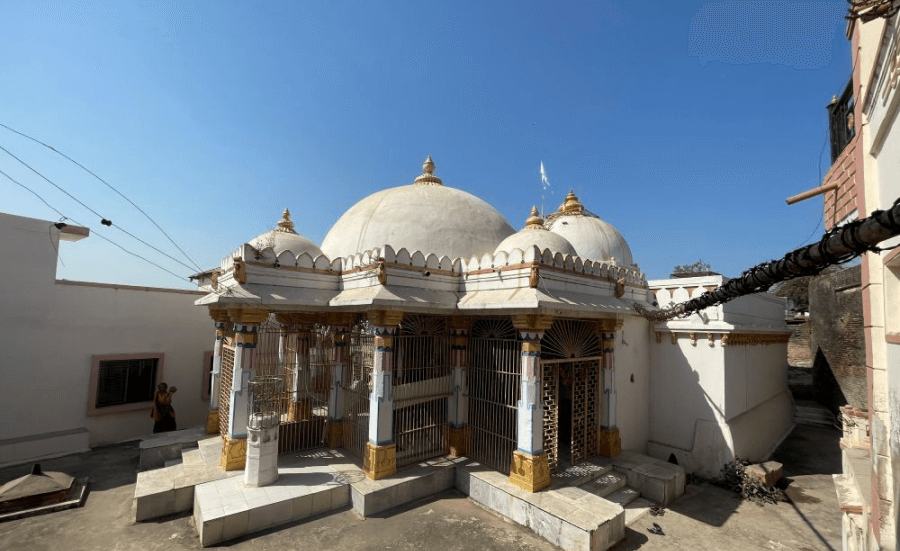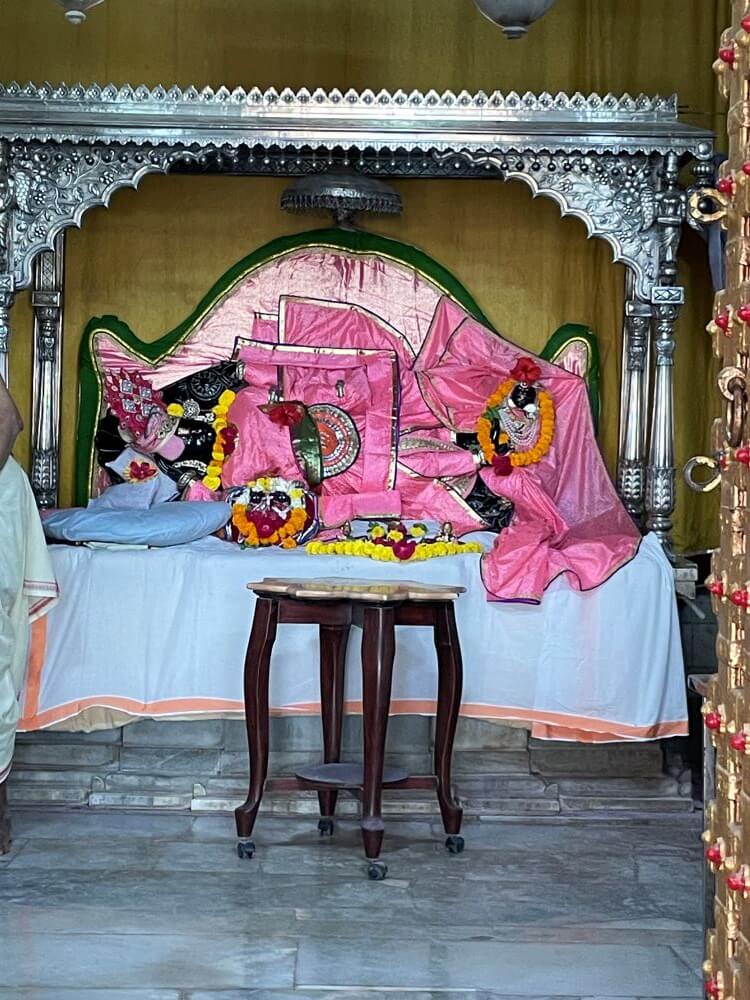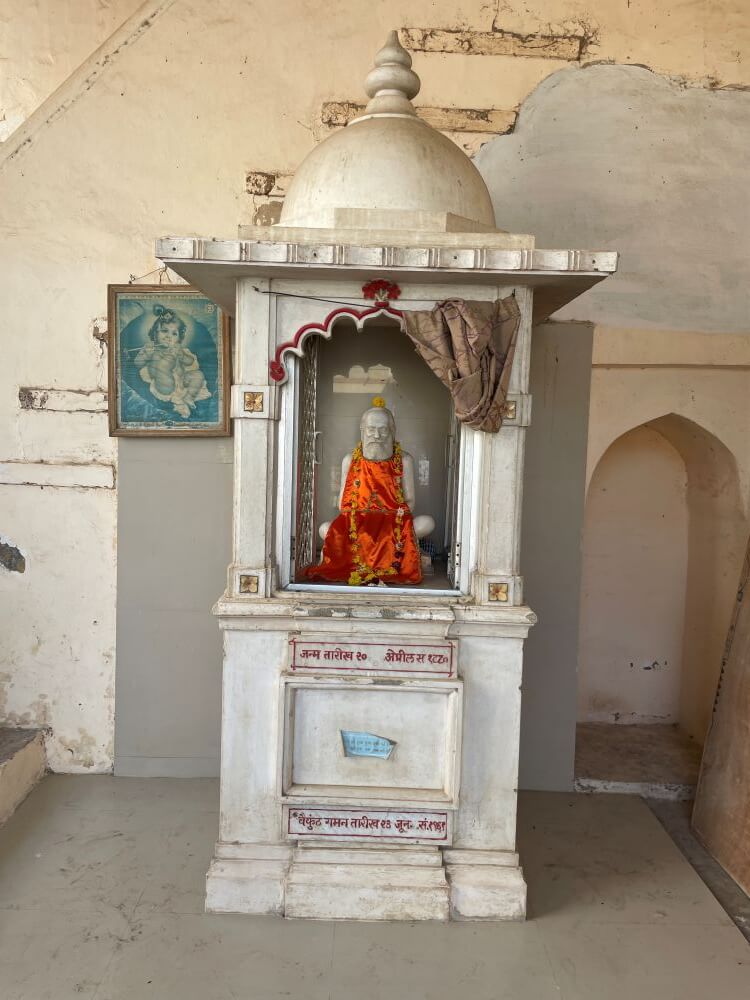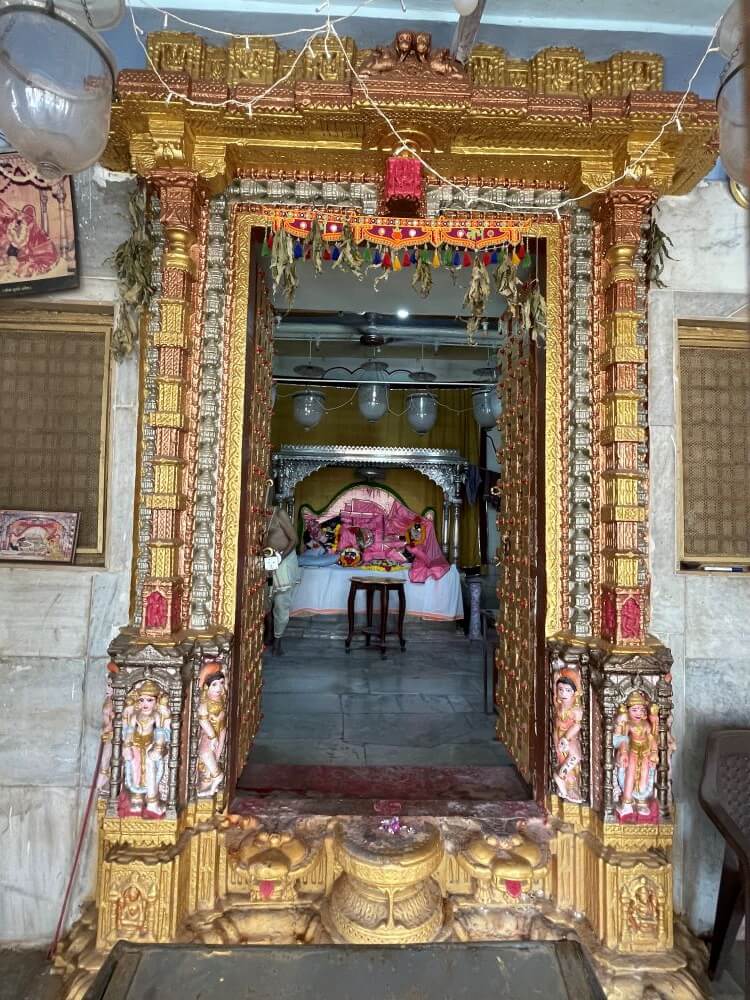
 As per devotees’ belief, the temple which, when circumambulated three times, yields the same merit as circumambulating the Earth is the Sheshnarayan Temple, situated at Chandod. According to mythology, after slaying the demon Talmegh, Lord Vishnu came to this place on the northern bank of the Narmada River to rest on the serpent bed of Sheshnag, weary from battle. Since Lord Vishnu resides here with Goddess Lakshmi, the place is considered a Vaishnavite pilgrimage site. It holds an important position in the Narmada Parikrama (pilgrimage around the Narmada River), attracting countless devotees and tourists.
As per devotees’ belief, the temple which, when circumambulated three times, yields the same merit as circumambulating the Earth is the Sheshnarayan Temple, situated at Chandod. According to mythology, after slaying the demon Talmegh, Lord Vishnu came to this place on the northern bank of the Narmada River to rest on the serpent bed of Sheshnag, weary from battle. Since Lord Vishnu resides here with Goddess Lakshmi, the place is considered a Vaishnavite pilgrimage site. It holds an important position in the Narmada Parikrama (pilgrimage around the Narmada River), attracting countless devotees and tourists.
According to Chapter 90 of the Narmada Purana, in ancient times a powerful demon named Talmegh defeated all the gods and usurped their kingdoms. In distress, the gods appealed to Lord Vishnu. Vishnu, taking the form of Shri Krishna, fought Talmegh in the Himalayas. During the fierce battle, Vishnu used his Sudarshan Chakra to behead the demon. However, the chakra turned dark after the demon’s slaying. To atone for the sin of killing, Vishnu undertook a pilgrimage and came to the banks of the Narmada River, where he washed the chakra. The chakra regained its brilliance and the ghat where it was washed is now known as Chakrateerth Ghat. It is believed that Vishnu later rested at this very place on the serpent bed, Sheshnag.
 The history of this temple is that when there was discord between Shrimant Madhavrao Peshwa and his uncle Raghobadada Peshwa, Govindrao Gaikwad, son of Baroda’s ruler Damajirao Gaikwad, allied with Raghobadada to obtain the throne of Baroda. They besieged Baroda with Raghobadada’s help. They fought against the Peshwa’s commander Haripant Phadke and Fattesinghrao Gaikwad. During this period of warfare in the regions of Vadodara, Surat, Dabhoi and Mahi, around 1775 AD, Govindrao Gaikwad constructed this temple. Later in 1793, Govindrao received the official robes of authority for the throne. He made provisions for an annual grant from the state for the maintenance of this temple.
The history of this temple is that when there was discord between Shrimant Madhavrao Peshwa and his uncle Raghobadada Peshwa, Govindrao Gaikwad, son of Baroda’s ruler Damajirao Gaikwad, allied with Raghobadada to obtain the throne of Baroda. They besieged Baroda with Raghobadada’s help. They fought against the Peshwa’s commander Haripant Phadke and Fattesinghrao Gaikwad. During this period of warfare in the regions of Vadodara, Surat, Dabhoi and Mahi, around 1775 AD, Govindrao Gaikwad constructed this temple. Later in 1793, Govindrao received the official robes of authority for the throne. He made provisions for an annual grant from the state for the maintenance of this temple.
Chandod village was historically known as Chandipur, named after Goddess Chandika, who killed the demons Chanda and Munda. The village lies at the confluence of the Narmada, Orsang and hidden Saraswati rivers.
The temple stands on a raised platform near Jambu Pathshala, a short distance from Chakrateerth Ghat. To reach the temple courtyard, one must climb 31 stone steps. A tall wooden main gate leads to a grand entrance hall, which includes a memorial shrine of Narayan Maharaj, a devout follower of Sheshnarayan. A marble idol of the saint in a meditative pose is enshrined there. Narayan Maharaj passed away on June 23, 1905. During the Gaekwad reign, traditional music (shehnai and choughada) would be played in this hall before the temple’s aarti.
traditional music (shehnai and choughada) would be played in this hall before the temple’s aarti.
Entering through the stone doorway to the left of this main gate and climbing 17 steps, one reaches the Sheshnarayana temple. This temple is built on a high plinth. Its structure consists of an assembly hall (sabha mandap), small vestibule (antaral) and sanctum sanctorum (garbhagriha). The temple is of stone construction. The assembly hall is circular inside, with a domed ceiling supported by wide stone pillars. Various names of Vishnu are inscribed around the edge of this dome. The dome is decorated with miniature-style paintings depicting episodes from Krishna’s life and Rasleela.
The vestibule has three entrances, with the main steel-gated door leading inside. The carved stone doorway to the sanctum features beautiful sculptures of the Vaishnavite gatekeepers Jai and Vijay and celestial maidservants. The lintel displays an idol of Lord Ganesha, with detailed decorative elements. The mandaraka (threshold) is tall and adorned with crescent-shaped designs and Kirtimukhas (mythical face motifs).
Inside the sanctum, Lord Sheshnarayan is seen resting on a silver-adorned bed, decorated with golden ornaments. This black marble idol shows Vishnu reclining on Sheshnag, with Goddess Lakshmi seated near his feet. Hanging glass lanterns from olden times can still be seen in the sanctum.
In this temple, one can have darshan of Sheshnarayana from 7 AM to 12:30 PM and from 4:30 PM to 7:30 PM. Devotees come to this temple for darshan after bathing in the sacred waters of the Narmada. During the month of Shravan, one can see Vishnu swinging on an artistic swing (Hindola). Large crowds of devotees also gather here during Krishna Janmashtami and Deepotsav (Festival of Lights). In the month of Margashirsha, a Patotsav (temple anniversary celebration) is held. At that time, many religious programs are organized, including the recitation of the Vishnu Sahasranama and the performance of Vishnu Yajna.



